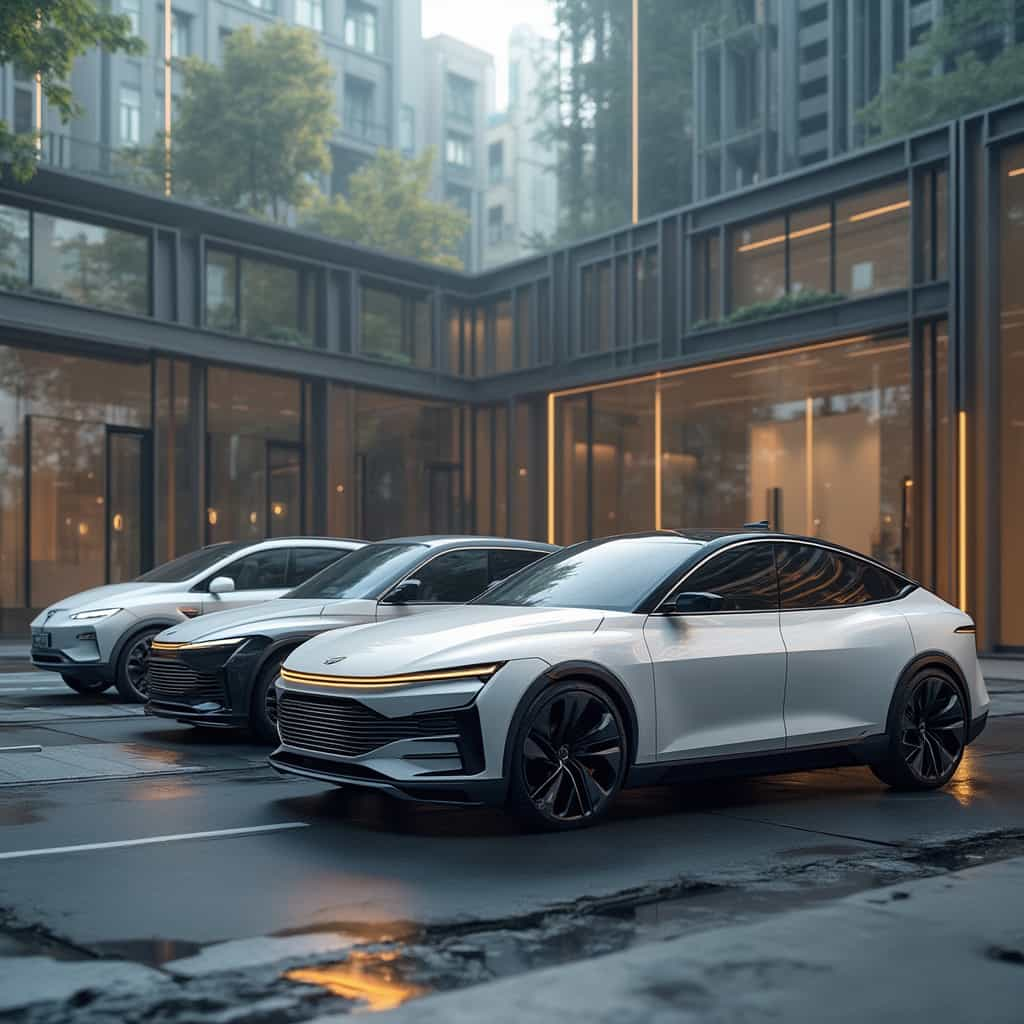The transformation of the automotive industry towards sustainable solutions has brought hybrid and electric vehicles to the forefront. Over the past decade, these vehicles have evolved significantly, offering a range of features that appeal to environmentally-conscious consumers and tech enthusiasts alike. From energy efficiency to the latest in autonomous driving technology, hybrid and electric cars have set a compelling precedent for the future of mobility.
Hybrid vehicles seamlessly integrate a traditional internal combustion engine with an electric motor. This duality allows for enhanced fuel efficiency, reduced emissions, and a refined driving experience. Electric vehicles (EVs), on the other hand, rely entirely on electric power, utilizing high-capacity batteries to support their operations. Their zero-emission status marks a significant milestone in combatting air pollution and climate change.
Before purchasing a hybrid or electric vehicle, potential buyers must conduct thorough checks and consider potential issues. For hybrids, regular maintenance of both the combustion engine and the electric components is crucial. Electric vehicles require careful examination of battery health and charging infrastructure compatibility. Battery degradation is a common concern, necessitating a look at warranty packages offered by manufacturers – typically ranging between 8 to 10 years.
When it comes to auxiliary guarantees, manufacturers often offer comprehensive warranty packages covering both hybrid and electric systems. Tesla, for instance, provides an 8-year or infinite mile battery and drive unit warranty. Comparatively, Toyota offers a hybrid battery warranty extending for 10 years or 150,000 miles, reflecting their confidence in the durability of their hybrid systems.
Problematic areas such as higher upfront costs, limited charging stations, or long charging times must also be pondered. Developing infrastructure is improving these aspects, yet they remain vital considerations for potential owners. State and federal incentives in many countries work to offset initial purchase costs, promoting wider adoption.
Comparative assessments aid in aligning product specifications with personal preferences and budget constraints. Currently, the Tesla Model 3, Nissan Leaf, and Chevrolet Bolt stand out in the electric category, while the Toyota Prius, Honda Insight, and Hyundai Ioniq lead hybrid offerings. Each of these models has elements that cater to distinct consumer needs, such as range, charging time, and amenability to urban or long-distance travel.
Geographically, the adoption of hybrid and electric cars varies. Europe, led by Norway with its aggressive pushes for EVs, and China, bolstered by government investments in green technology, are notable leaders. In North America, California represents a hub for eco-friendly vehicle sales. The energy strategies and environmental policies of these regions play a key role in these trends, emphasizing the correlation between governmental action and consumer behavior.
In analyzing alternative mobility trends, it’s clear that interest extends beyond personal vehicles. Scooters and electric motorcycles are gaining traction, primarily in urban settings. Brands such as Vespa with its electric Primives model, and motorcycle manufacturers like Zero Motorcycles, are seeing increased sales as consumers look for efficient, eco-friendly ways to navigate congested city streets.
When intent on purchasing, consumers should consult a breadth of resources for reliable information. Websites such as Edmunds, KBB (Kelley Blue Book), and MotorTrend provide in-depth reviews and comparisons. Online communities and forums, like those on Reddit or dedicated Facebook groups, can offer firsthand experiences and tips. Moreover, publications like ‘Consumer Reports’ can be trusted to offer objective analyses regarding vehicle reliability and value.
Industry experts like Elon Musk, CEO of Tesla, advocate for the rapid transition to electric vehicles, suggesting it as a necessary step against climate change. Similarly, researchers, including those from the International Energy Agency, emphasize the long-term benefits of sustainable transportation systems. Public sentiment is swaying towards these experts’ views, backed by data showcasing cleaner air and reduced carbon footprints in communities adopting these technologies.
You may also like
Thermal and Electric Motorcycles: Technical Landscape and Choosing What’s Best for You
Exploring the dynamics between thermal and electric motorcycles, this article delves into technical specifications, auxiliary guarantees, purchasing considerations, and market trends. It offers a comparison of different models and highlights key expert resources to assist buyers in making informed decisions.
Scooters: A Comparative Analysis Between Internal Combustion Engines and Electric Mobility
As the world shifts towards sustainable transportation, the scooter industry is at the forefront of this revolution. This article explores technical specifications, warranty options, and the considerations for purchasing both internal combustion engine scooters and electric scooters. We also delve into regional purchase trends, highlight alternative mobility options, and provide guidance on informed scooter purchasing.
Traditional and Electric Bicycles: Purchase and Trends
This article delves into the world of traditional and electric bicycles, covering technical features, warranty options, and purchase considerations for road, cross, and mountain bikes. It also contrasts these with other alternative mobility solutions like hybrid and electric cars, scooters, and motorcycles, highlighting trends and regional purchasing patterns.
Motos térmicas y eléctricas: panorama técnico y cómo elegir la mejor opción
Este artículo, que explora la dinámica entre las motocicletas térmicas y eléctricas, profundiza en las especificaciones técnicas, las garantías adicionales, las consideraciones de compra y las tendencias del mercado. Ofrece una comparación de diferentes modelos y destaca recursos clave de expertos para ayudar a los compradores a tomar decisiones informadas.
Patinetes: Un análisis comparativo entre los motores de combustión interna y la movilidad eléctrica
A medida que el mundo avanza hacia el transporte sostenible, la industria de los scooters está a la vanguardia de esta revolución. Este artículo explora las especificaciones técnicas, las opciones de garantía y las consideraciones para la compra de scooters con motor de combustión interna y eléctricos. También profundizamos en las tendencias de compra regionales, destacamos opciones de movilidad alternativa y ofrecemos orientación para una compra informada de scooters.
Bicicletas tradicionales y eléctricas: compra y tendencias
Este artículo profundiza en el mundo de las bicicletas tradicionales y eléctricas, abarcando sus características técnicas, opciones de garantía y consideraciones de compra para bicicletas de carretera, ciclocross y de montaña. También las compara con otras soluciones de movilidad alternativas, como coches híbridos y eléctricos, scooters y motocicletas, destacando las tendencias y los patrones de compra regionales.
